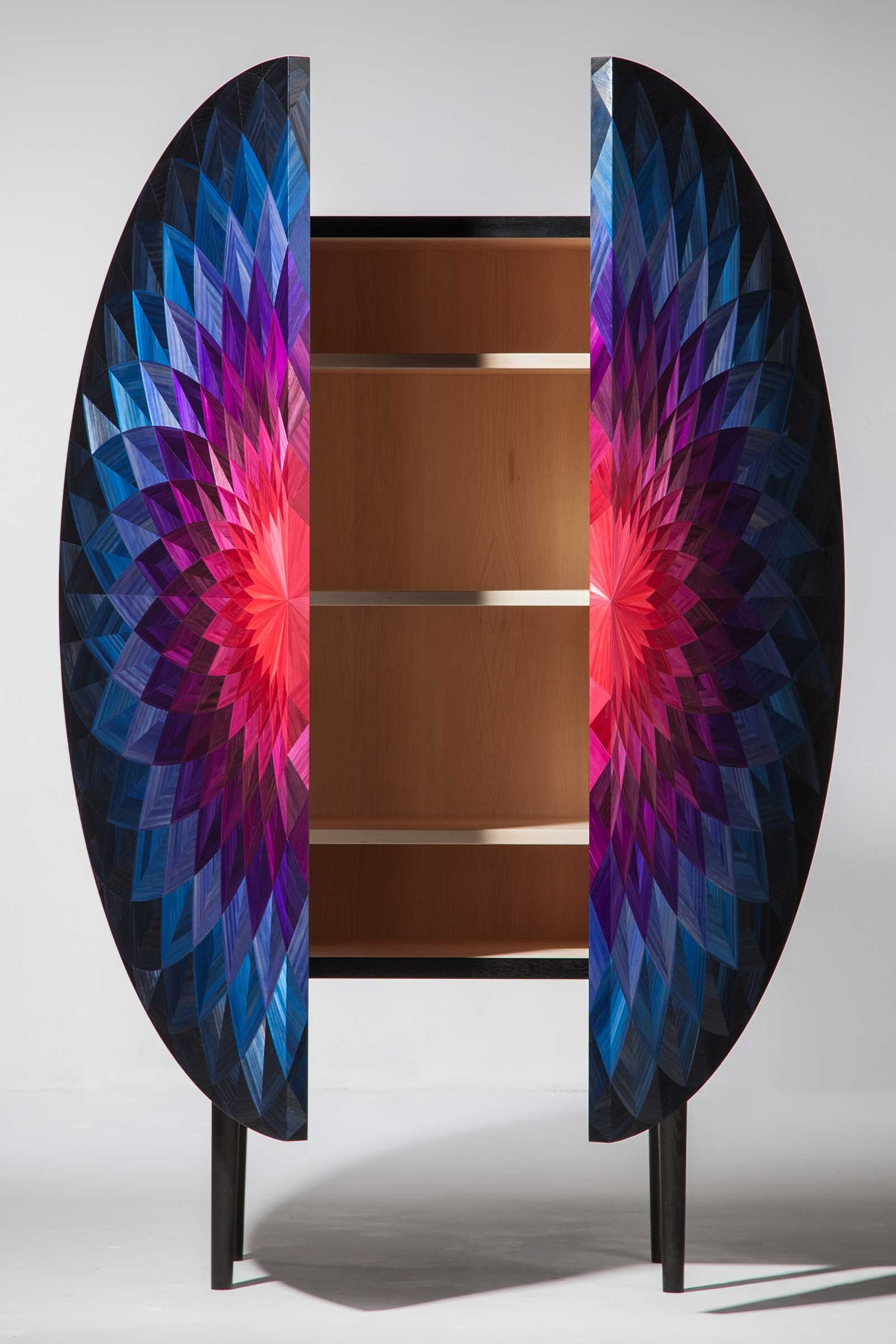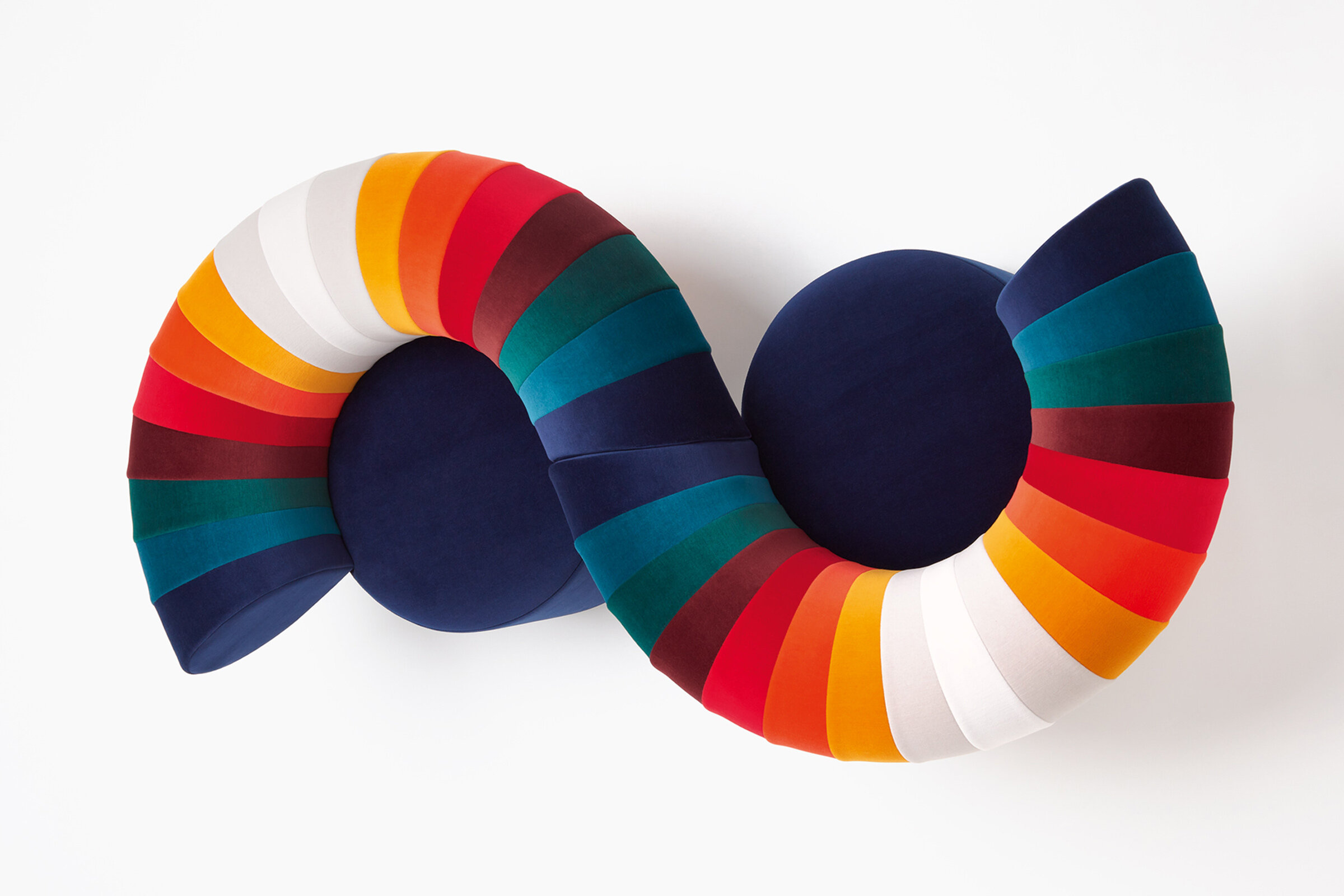Getting to Know Adam&Arthur

French artisan Arthur Seigneur and Australian designer Adam Goodrum have teamed up as Adam&Arthur to create pieces that combine straw marquetry and contemporary furniture design. We spoke with Goodrum following A&A’s debut exhibition, Exquisite Corpse, at Melbourne’s Tolarno Galleries to find out more about their partnership and process, which centres on each of them pushing the boundaries of their craft
Design Anthology: How did you and Arthur first meet?
Adam Goodrum: Arthur moved to Sydney from Paris in 2015 and set up a studio not far from mine. He got in touch when he was building up his local design network and we formed a friendship that was helped along by geographical proximity and a mutual love of design.
When did you first decide to collaborate?
Before formalising our collaboration through Adam&Arthur, we worked together on Cult’s Chairity Project in 2015. This first project opened our eyes to the possibility of creating something truly innovative. Arthur’s desire to modernise the 17th-century craft together with the inspiration I found in the technique led to the birth of Adam&Arthur, marked by the creation of our first piece, the Bloom cabinet (which was acquired by the NGV in 2018), and then to the Exquisite Corpse/Cadavre Exquis exhibition at Tolarno Galleries this year.
Did you know much about straw marquetry before you started working with Arthur?
I was broadly aware of marquetry as a decorative technique, and I knew about parquetry since I love repetition, geometry and the materiality of wood. Arthur introduced me to straw marquetry and, while his work is already immaculate, he really wants to push the boundaries of his craft. I feel privileged to be working with him; there are only a small number of craftspeople in the world who devote themselves to straw marquetry. The medium itself allows almost limitless possibilities of colour and pattern, creating many opportunities for its use and ongoing inspiration.
How did you approach the collaboration, given that your backgrounds and skills are so different?
This mindset of pushing boundaries in our individual disciplines is a design philosophy we share, and it underpins both of our practices. The synergy of our backgrounds results in contemporary pieces that give new life to the traditional technique of straw marquetry. I conceive the initial design, then we embark on a rigorous process of refining the concept, going back and forth in a process similar to the exquisite corpse method, to resolve the form, pattern and colour. As Arthur’s design sensibility is more traditional and mine more contemporary, there’s a wonderful tension to this process. We make numerous scale models until we are happy, but as the construction phase is so time consuming, we also finesse the design as each piece is being made.
How is working with Arthur different to your other collaborations in the past?
Although my furniture pieces have a modern style, I’ve always had an appreciation for the high-end craft of bygone eras. The harmony between European and Australian design is physically demonstrated through the creation of our pieces in Australia using a European technique, and is practically demonstrated through the application of a meticulous hands-on technique to a modern object. This collaboration has allowed us the freedom to reinvent tradition while capturing the spirit of Australian design, which is irreverent and forward facing. It’s been a unique experience for both of us.
How much experimentation goes into achieving the colours and consistency in each piece?
We started digitally, with extensive computer-based colour and pattern experimentation. Once the possibilities were refined, we made scale models to finesse the surfaces, angles and relationships between the three pieces in the collection. The rye straw is imported from specialist producers in Burgundy and is hand-dyed by Arthur in a range of custom hues that are subtly reflective. For each colour, we tested how long the straw should stay in the dye to achieve the required intensity or subtlety of colour. Through this experimentation, Arthur pushed the boundaries and achieved an ivory hue that’s never been done with straw before.
Straw marquetry is such a time-consuming process, and each of the Exquisite Corpse pieces is quite elaborate. How long did production take for each design?
The straw is dyed in its natural rolled form and from there each shoot is split open and flattened in preparation for application. The Talleo tallboy uses more than 14,000 individual strands, the Longbow credenza uses 10,000, and the Archant console 7,000. The technique itself is labour-intensive, the production of the carcasses and fixtures is bespoke, and the design process is rigorous. It took us one-and-a-half years of intense work to realise these three pieces.
Images / Andrew Curtis and Jennifer Chua

















